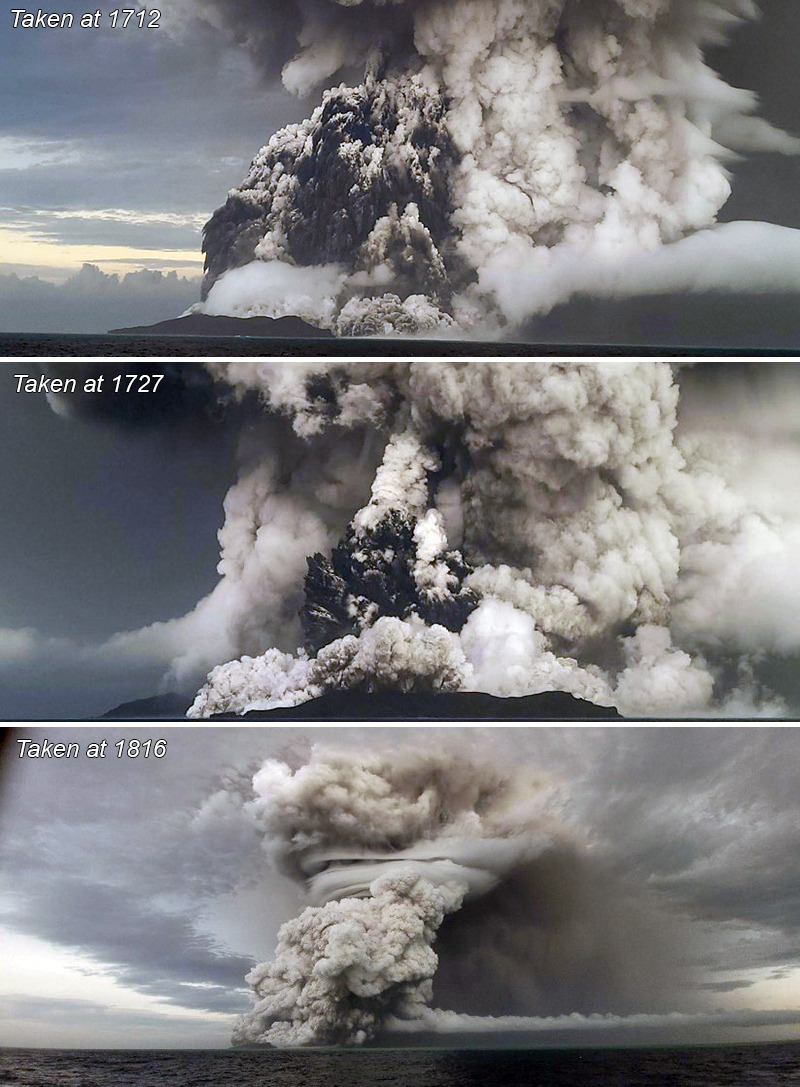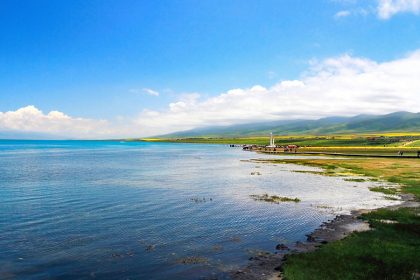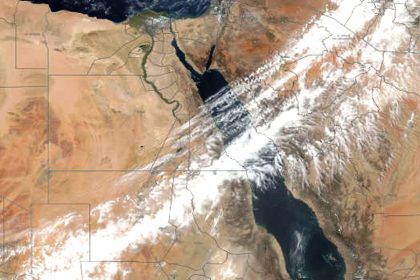Hi readers! You must be thinking from where such huge amounts of water vapor are comming from? Well, they have come from Tonga. (see pictures at the top taken by Live Science at different times during volcanic eruption).
Hunga Tonga-Hunga Ha’apai volcano in the Southwest Pacific is 65 km Northwest of the Island of Tongatapu, where the capital of the Kingdom of Tonga, Nuku’alofa, is located. It lies 2,000 km North of New Zealand and over 3,000 km Northeast of Australia.
The underwater Hunga Tonga-Hunga Ha’apai volcano (unlike the surface volcano) that erupted on January 15th, 2022, is the major cause of these vapor.
Scientists (how are still analyzing the impact of eruption) discovered that such a huge amount of water vapor could warm the planet.
Researchers have calculated that the eruption of Hunga Tonga ejected an unbelievable 50 million tons (45 million metric tons) of water vapor into Earth’s atmosphere while enormous amount of ash and volcanic gases are the bonus. Such a massive amount of water vapor increased the amount of moisture in the global stratosphere by about 5%, which could trigger a cycle of stratospheric cooling and surface heating: the effects that may persist for months to come: the scientist discovered.
The news of the eruption was first broken on Space.com by Mindy Weisberger on September 24th 2022 and was updated on September 28th, 2024. The eruption began on Jan 13th and reached its peak on January 15th, 2022. It was a record-breaking blast that the world witnessed about two years ago and was the most powerful underwater volcano erupted off the coast of the tiny island nation of Tonga (that’s why it is commonly called “Tonga eruption”) in the Pacific Ocean. According to the National Oceanic and Atmospheric Administration (NOAA), the blast extended for 162 miles (260 kilometers) and sent columns of ash, steam and gas climbing more than 12 miles (20 km) into the air. The researchers analyzed the amount of water in the trails by evaluating data gathered by instruments called radiosondes (an instrument carried by balloon to various levels of the atmosphere which then transmit the measurements by radio) attached to weather balloons and sent upward into the volcanic trail. As these instruments rise through the atmosphere, their sensors measure temperature, air pressure and relative humidity, transmitting that data to a receiver on the ground, according to the National weather Service (NWS).
In underwater volcanoes, “submarine eruptions” can draw large parts of their explosive energy from the interaction of water and hot “magma”
The hot fluid/semi-fluid material below or within the earth’s crust from which lava and other fiery rock is formed on cooling. “When red-hot magma comes into contact with seawater, an explosion results”
which propels huge quantities of water and steam into the eruption column: described a new study that scientists published on September 22nd in the journal Science. Within 24 hours after the eruption, the trail extended over 17 miles (28 km) into the atmosphere.
Tonga eruption ejected approximately 441,000 tons (400,000 metric tons) of sulfur dioxide, about 2% of the amount discharged by Mount Pinatubo (An active stratovolcano: the one that is made up of alternate layers of lava and ash in the Zambales Mountains in Luzon in the Philippines.) during the 1991 eruption. But unlike Pinatubo which happen on land, underwater Tonga’s volcanic plumes sent “substantial amounts of water” into the stratosphere: the zone that extends from 31 miles (50 km) down to 4 miles (6 km) above Earth’s surface (NWS).
Atmospheric water vapor absorbs solar radiation and re-emits it as heat. With tens of millions of tons of Tonga’s moisture (vapor) now adrift in the stratosphere, the Earth’s surface will surely be heating up but the extent to which it will, is not is not yet clear. Since the vapor are lighter than other volcanic aerosols and are less affected by gravity’s pull hence, it will take longer for this warming effect to dissipate, while surface warming could continue “over the months to come” says the scientists.
As earlier reported by Live Science, Tonga ejected enough water vapor to fill 58,000 Olympic-size swimming pools, which is abnormal amount of atmospheric moisture that could theoretically weaken the ozone layer.
The scientists also determined in this study that these enormous quantities of water vapor could indeed modify chemical cycles that control stratospheric ozone however, detailed studies will be required to quantify the effect on the amount of ozone because other chemical reactions may play a role as well.
Dear reader readers, Tonga eruption is two years old, but its real impact is still being assessed. The story of 50 million tons of water vapor in the atmosphere is the latest news which may be of interest to those concerned about global warming: the major component of which is water vapors according to the data collected and published by myself and other hence, this single point caught my attention and became the subject of today’s blog.
See you next week with new story,
Take care, bye.





